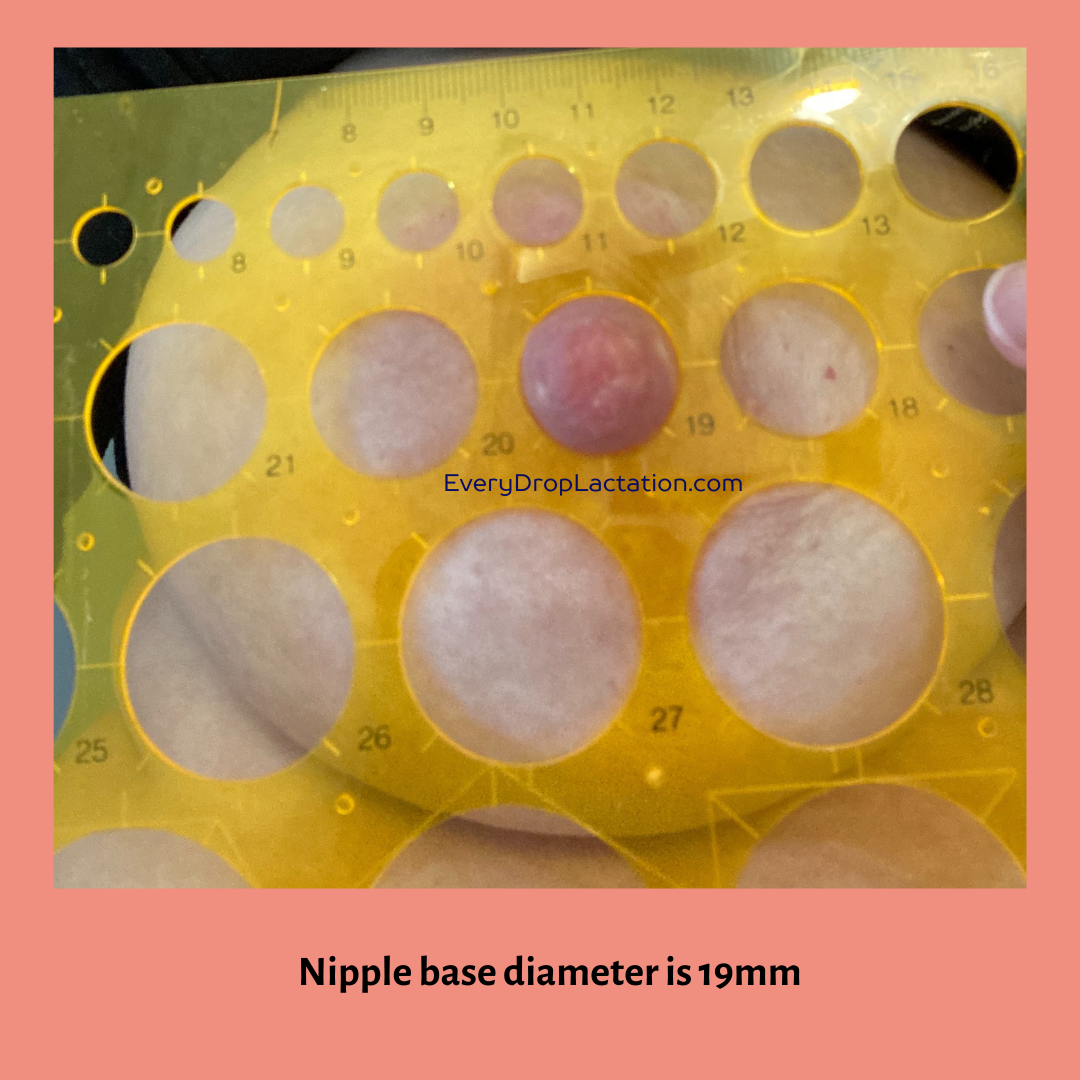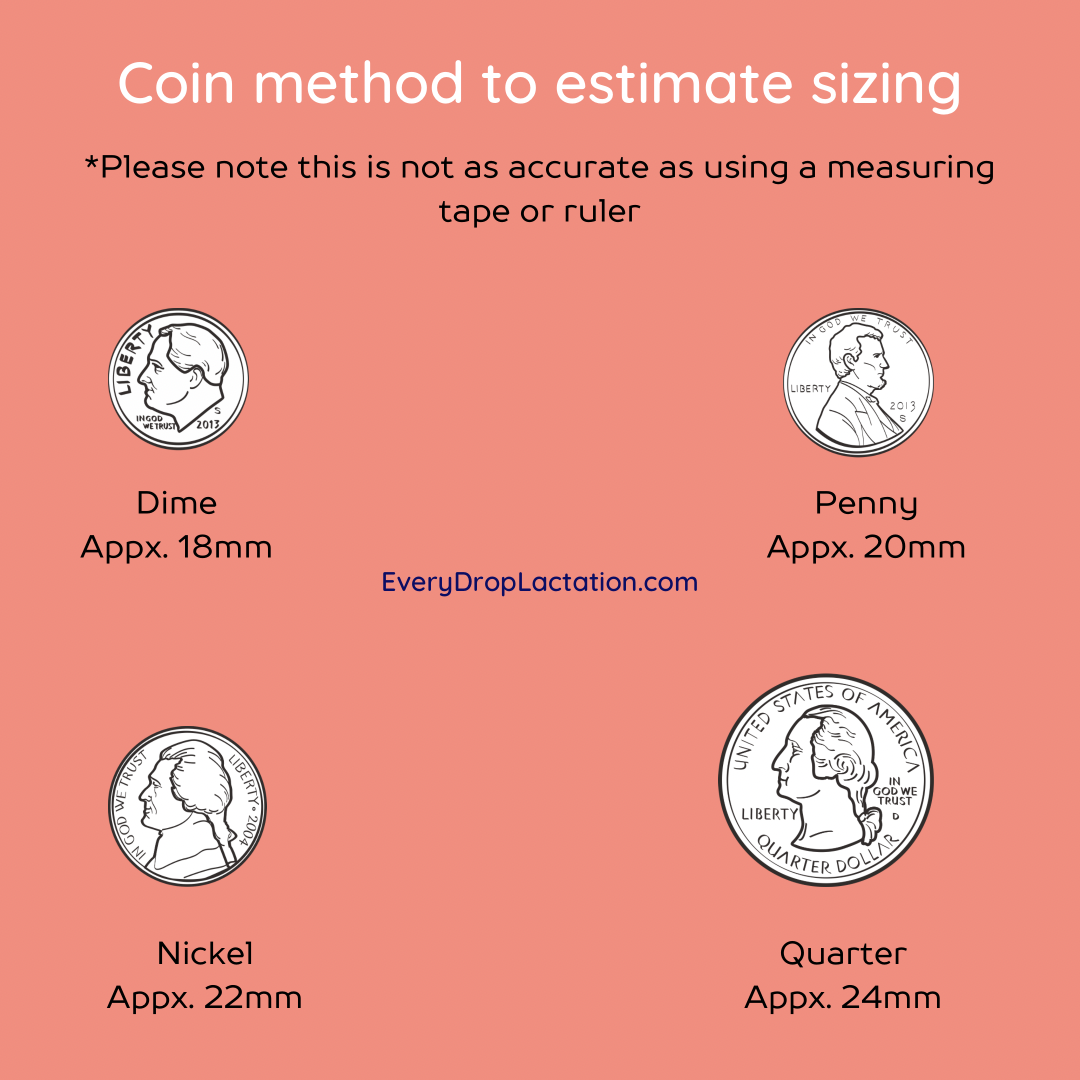Flange sizing simplified
So you need to pump. Maybe it’s because your baby needs extra milk due to weight gain concerns, your baby is in the NICU, you’re returning to work, or you’ve deciding to exclusively pump. Maybe you’re able to have a night out with friends, or a special date night. No matter why you need to pump, flange sizing can make or break your success.
The flange is the pump part that is actually touching your breast/chest. It is sometimes called a breast shield (not to be confused with a nipple shield). They come in MANY different sizes and are not related to your breast size at all!
Sizing can greatly affect how comfortable pumping is (hint: it shouldn’t hurt), AND how much milk you get out with your pump. This means, if you’re depending on your pump to get enough milk to feed your baby and to maintain your supply, it is pretty dang important!
Not everyone, not even all IBCLCs know how to correctly size flanges. There are different thoughts on how to size for flanges (though, my way is the right way 😉). However, the two rules are always the same.
Rule #1 Use whatever size is the most comfortable
AND
Rule #2 Use whatever size gets you the most milk
Here come the tricky and confusing things that can happen with sizing and tips on how to help fix them.
Your pump likely came with two flange sizes—usually 24mm and 27/28mm. So most people think they must be one of those sizes, right? Why else would they send those with your pump??
It would be really nice if those were the sizes most often needed, but they’re not. I have found most people need 15mm-19mm flanges while pumping.
If you have been using a flange size and were not correctly sized first, your nipples are likely swelling up while pumping, making it seem like you need an even BIGGER size.
But that’s not true. Truth be told, your nipples are swelling up to fill up the extra space around them because the size is too big.
Maybe you were sized in the hospital, or when you first started pumping, but now you’re not pumping enough milk or it’s no longer comfortable.
Over time your flange sizing can change. There are a lot of options for sizes (10mm-40mm!), but also lots of type or style options.
Mind blown, right?
Here’s how to correctly size flanges:
Step 1: Measure your nipples at rest. Both of them (they can be different sizes). This means before any latching or pumping!
You want something that can measure the diameter (the length across) of the base of your nipple in millimeters. NOT your areola. Fabric measuring tape works great for this and is super cheap. You can also compare to your nipples to a coin to estimate in a pinch. 1cm = 10mm.
Step 2: Take that measurement and add 0-3 to that number.
If using a regular manual or electric pump (Medela, Spectra, Motif, Baby Buddha etc.) you will likely want to add 1-2mm to your nipple measurement. If using a wireless pump (Willow, Elvie etc.) you want to add 0-1mm.
Step 3: How does it look?
BEFORE pumping, the tunnel of the flange should be as close to your nipple as you can get it, without your nipples being pinched on the sides. While pumping check if your nipple is touching the back side of the flange tunnel or not.
What about elastic nipples? If your nipples stretch out far into the tunnel during pumping, you may want to try a smaller flange.
Step 4: How does it feel?
While pumping, it should feel comfortable. If it feels like your nipple is still swelling a lot, you may want to try a size smaller. If it feels like your nipple is being pinched on the sides, you may want to try the next size up. You may also want to try a different shape or style of flange. Also, lubricate, lubricate, lubricate! You should always use an oil based lubricant in the entry of the flange tunnel, and your nipple if desired, to check sizing and increase comfort.
** Disclaimer: If you have already been pumping with the wrong sized flange, you may need to slowly go down in size.
*Remember the right size for you, will follow the two forever rules of, whatever is the most comfortable AND gets you the most milk.
There are MANY sizes of flanges. There are also many types, lengths, and styles. Pumping shouldn’t be miserable or add to your stress. If you are having trouble with pumping being comfortable or you’re not pumping enough milk, I can help!
I have helped correctly size hundreds of pumping people. I can help make your pumping experience more enjoyable and effective.








